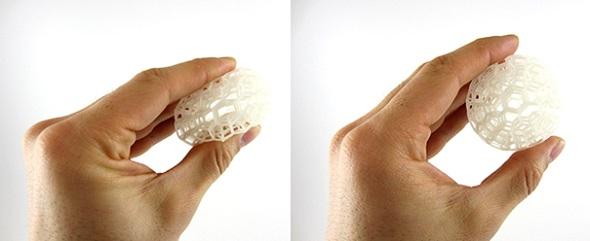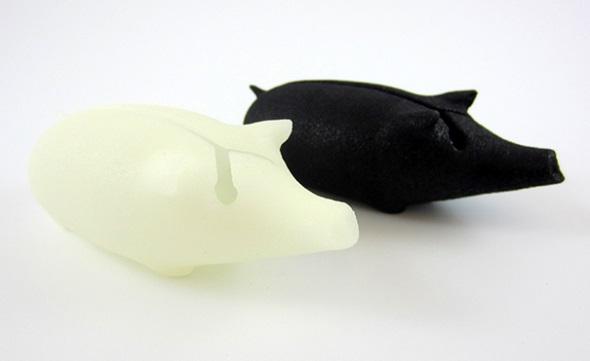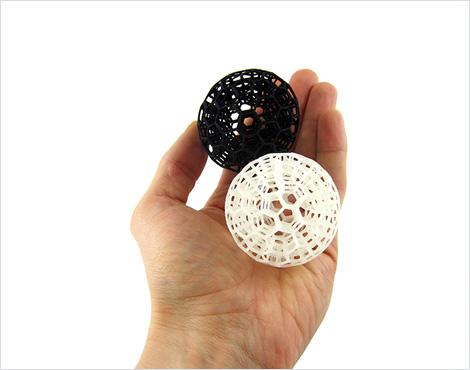 The team at i.materialise says models made using their rubber-like 3D printing material were constructed from an off-white, very fine, granular powder which was dyed black. What you got was a part which is strong, highly-flexible and durable.
The team at i.materialise says models made using their rubber-like 3D printing material were constructed from an off-white, very fine, granular powder which was dyed black. What you got was a part which is strong, highly-flexible and durable.
The technical name of the material is TPU 92A-1, and it’s a thermoplastic polyurethane. Now i.materialise says printing in this flexible rubber-like material just got better. Where once only a “dyed black” option was available, you can now order your 3D print in natural white as well.
These 3D printing flexible materials are excellent for bracelets, fashion accessories or even scale-model tires. The natural white option for rubber-like materials is by far the most flexible material i.materialise offers, and they say objects created with it can be squeezed without breaking.
The company says the rubber-like options give designers the freedom to print objects up to 32 x 27 x 30 cm. They can also produce “interlinking parts.”
The materials are used in the Selective Laser Sintering process.
The new rubber-like material costs a little over $2 per cubic centimeter (and there’s a handling cost per model of just over $5), but for each extra copy of a given model, the handling cost drops from the $5 to around $3 per model.
But there is a bit of a catch. The company says they can’t sell — or even distribute — objects made from the materials in the United States yet.
“We’re still working on this issue and hope to give you some more good news in the future,” the company says of the US ban.
The company says the rubber-like material is perfect for models requiring shock absorption, like gadgets, squeezeable models, or a range of functional models. It can be printed in a minimum wall thickness of 1 mm and at levels of minimum detail down to 0.5 mm. If and when the material does become available in the US, i.materialise recommends that you read their design guide for crucial specifications on printing with the rubber-like product.
Do you think you’d be interested in this latest 3D print material and trying out the new color option? And why do you think the material is banned in the US? Let us know in the New Color Option for Rubber-Like Material forum thread on 3DPB.com. Check out some photos — and a Vine loop — below of objects 3D printed using this rubber-like material, showing their flexibility.
Subscribe to Our Email Newsletter
Stay up-to-date on all the latest news from the 3D printing industry and receive information and offers from third party vendors.
You May Also Like
Gorilla Sports GE’s First 3D Printed Titanium Cast
How do you help a gorilla with a broken arm? Sounds like the start of a bad joke a zookeeper might tell, but it’s an actual dilemma recently faced by...
Nylon 3D Printed Parts Made More Functional with Coatings & Colors
Parts 3D printed from polyamide (PA, Nylon) 12 using powder bed fusion (PBF) are a mainstay in the additive manufacturing (AM) industry. While post-finishing processes have improved the porosity of...
$25M to Back Sintavia’s Largest Expansion of Metal 3D Printing Capacity Since 2019
Sintavia, the digital manufacturing company specializing in mission-critical parts for strategic sectors, announced a $25 million investment to increase its production capacity, the largest expansion to its operations since 2019....
Velo3D Initiates Public Offering in a Bid to Strengthen Financial Foundations and Drive Future Growth
Velo3D (NYSE: VLD) has been among a number of publicly traded 3D printing firms that have attempted to weather the current macroeconomic climate. After posting a challenging financial report for 2023,...




































